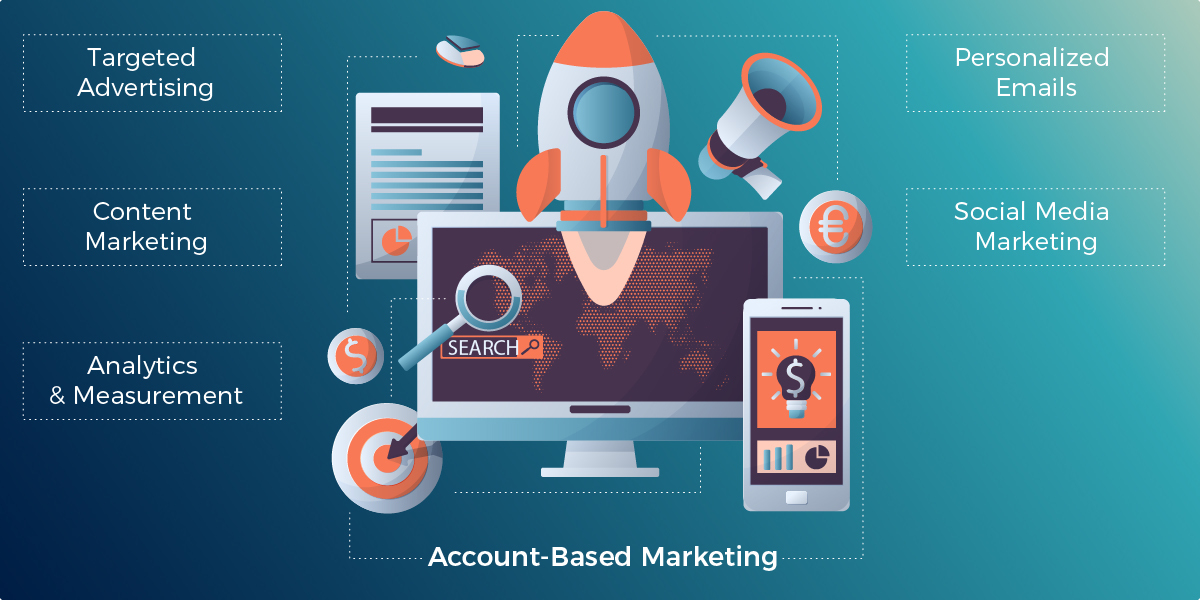In recent years, the marketing landscape is evolving and turning towards account-based marketing (ABM). ABM is a B2B marketing strategy that specially focuses on high-value accounts with personalized campaigns. Digital marketing plays a specific role in ABM, as it enables marketers to reach and engage with their target accounts more effectively. In the below blog post, we can see the role of digital marketing in account-based marketing.
What is Account-Based Marketing?
Account-based marketing (ABM) is a strategic approach to B2B marketing that encourages business to focus only on a specific potential audience, rather than targeting a broad audience. The goal of ABM is to create personalized campaigns for each target account to increase engagement, generate leads, and ultimately, drive revenue. ABM requires close alignment between marketing and sales teams to identify the target accounts, create personalized campaigns, and measure the impact of the campaigns.
Why is Digital Marketing Important for ABM?
Digital marketing plays a crucial role in ABM, as it enables marketers to reach and engage with their target accounts more effectively. Digital marketing channels such as email, social media, search engines, and display advertising provide a direct and measurable way to reach target accounts. Here are some of the ways in which digital marketing supports ABM:
Targeted Advertising: With digital advertising, marketers can target specific accounts with highly personalized ads based on their interests, needs, and behavior. For example, a marketer can use LinkedIn ads to target decision-makers in a specific industry or company size.
Personalized Emails: Email marketing is a perfect way to approach target accounts with personalized messages. Marketers can use dynamic content and personalization tokens to create emails that resonate with each target account.
Content Marketing: Content marketing is an essential component of ABM, as it enables marketers to provide value to target accounts and establish their brand as a thought leader. Digital channels such as blogs, whitepapers, and webinars can be used to create and distribute content that is relevant to each target account.
Social Media Marketing: Social media platforms such as LinkedIn and Twitter provide an opportunity to engage with target accounts and build relationships. Marketers can use social media to share relevant content, participate in conversations, and connect with decision-makers.
Analytics and Measurement: Digital marketing channels provide insight into data that can be utilized to measure the impact of ABM campaigns. Marketers can monitor metrics such as website traffic, email open rates, and click-through rates to determine the result of their campaigns.
Digital marketing plays a crucial role in account-based marketing by enabling marketers to reach and engage with their target accounts more effectively. By using targeted advertising, personalized emails, content marketing, social media marketing, and analytics, marketers can create personalized campaigns that resonate with each target account. ABM requires a close alignment between marketing and sales teams, and digital marketing provides a measurable way to track the impact of the campaigns. As ABM continues to gain popularity, digital marketing will become even more critical to its success.





